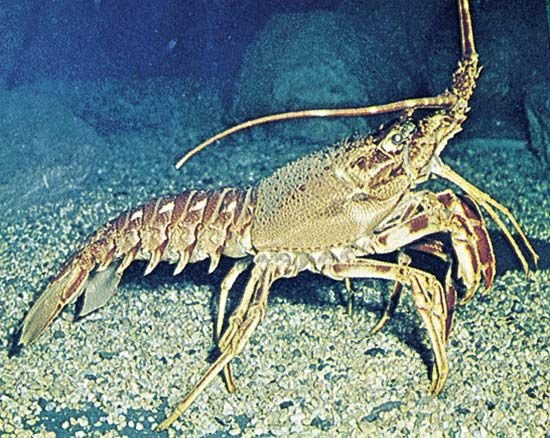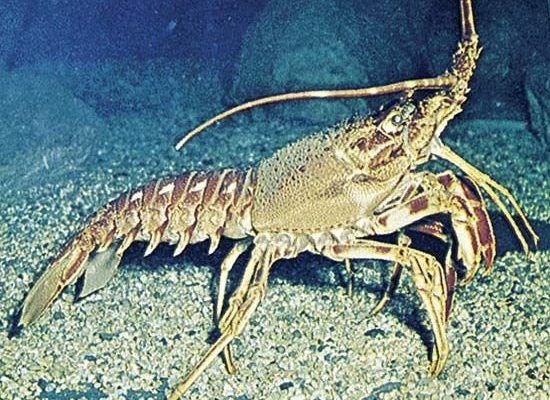
Let’s take a closer look at the different habitats where lobsters can be found. Imagine them as the adventurous travelers of the ocean, exploring everything from rocky crevices to sandy seafloors. Understanding where lobsters thrive not only whets our appetite for knowledge but also enhances our appreciation for these remarkable marine animals. So, grab a cup of coffee, and let’s dive into the world of lobsters!
The Ocean: The Primary Habitat of Lobsters
When it comes to lobsters, the ocean is their main stage. Most lobsters, especially the well-known American lobster, are found in the Atlantic Ocean. They prefer cool, shallow waters, often around 50 to 600 feet deep, where they can easily find food and shelter. Honestly, think of it like a cozy apartment where they have everything they need right at their fingertips.
Lobsters thrive near rocky environments, which provide fantastic hiding spots from predators. They often create their homes in burrows or crevices among rocks and coral reefs. These areas are like a lobster’s version of a penthouse suite, offering safety and a buffet of food. Their diet primarily consists of fish, mollusks, and other marine organisms. So, if you’re ever near a rocky coastline, chances are there are some lobsters living their best lives just beneath the surface!
Temperature and Habitat Preference
Lobsters have a preference for specific water temperatures. They usually favor colder waters, typically between 45°F and 60°F. This is important because it affects their growth and reproductive cycles. As the temperature rises, lobsters tend to move to deeper, cooler areas to find their comfort zone.
You might wonder why they prefer these colder waters. Well, it has a lot to do with their well-being. Warmer waters can lead to stress and even disease, making lobsters vulnerable to predators. By sticking to their preferred temperature range, they can grow bigger and healthier, ensuring a thriving lobster population.
Coastal Habitats: Rocky Shores and Sandy Bottoms
Lobsters are not just found in the deep ocean; they also inhabit coastal areas. These zones are bustling with life and provide lobsters with ample food sources. The rocky shores are particularly important as they serve as prime real estate for lobsters. They love to snuggle in among rocks, taking advantage of the shelter and snacks the environment offers.
Aside from rocky areas, lobsters can also be found in sandy or muddy bottoms. Here, they’ll dig burrows to keep themselves safe and comfortable. These burrows are like cozy little caves that not only shield them from predators but also help them stay moist when the tides go out. It’s a smart strategy that allows lobsters to thrive in various environments.
The Role of Habitats in Lobster Survival
The different habitats where lobsters are found play a crucial role in their survival. For one, the availability of food directly influences their health and growth. In areas with ample prey, lobsters can easily find their next meal, which is essential for their development.
Additionally, different habitats offer various levels of protection from predators. By occupying spaces like rocky crevices or sandy burrows, lobsters can cleverly evade threats. This adaptability is a significant factor in their long-term survival, allowing them to thrive in diverse environments.
Other Marine Regions: Lobsters Beyond the Ocean
While most people think of lobsters as ocean dwellers, some species can even be found in brackish waters—places where freshwater and saltwater mix. This includes estuaries and coastal lagoons, which offer a unique habitat for specific types of lobsters.
You might be surprised to learn that in some regions, lobsters venture into rivers or estuaries, especially during certain seasons. These areas can offer an abundance of food, making them attractive temporary homes for lobsters looking to snack on something different. For instance, juvenile lobsters may move into these environments to feed before returning to the ocean as they grow.
Adaptations to Unique Habitats
Lobsters that dwell in unique habitats have special adaptations that help them survive. In brackish environments, for example, their bodies can tolerate changes in salinity, making them more resilient to varying conditions. This ability to adapt is what sets lobsters apart as effective scavengers in different ecosystems.
Additionally, lobsters often have a more varied diet in these environments. They can feed on both marine and freshwater organisms, allowing them to take advantage of the diverse food sources available. This adaptability ensures their survival even in unconventional habitats.
Lobster Species and Their Specific Habitats
There are several different species of lobsters, each with its preferred habitat. The most commonly known is the American lobster, which primarily resides in the North Atlantic Ocean. On the other hand, the spiny lobster, found in warmer waters, has slightly different habitat requirements. These lobsters tend to avoid the cold and are more prevalent in tropical and subtropical regions.
Each species has its own unique adaptations that help it thrive in its respective habitat. For instance, spiny lobsters often gather in groups and prefer rocky or coral reefs, while American lobsters favor cooler, deeper waters. Understanding the specific needs of each lobster species can help us appreciate the diverse ecosystems they inhabit.
Impacts of Habitat Loss on Lobsters
Unfortunately, human activities can have a significant impact on lobster habitats. Coastal development, pollution, and overfishing can threaten these delicate ecosystems. As habitats are destroyed or altered, lobsters can struggle to survive.
To protect these fantastic creatures, it’s essential to support sustainable fishing practices and conservation efforts. By being aware of how our actions affect lobster populations, we can help preserve their natural habitats for future generations.
Lobsters are remarkable creatures that play a vital role in marine ecosystems. From the chilling depths of the Atlantic to the rocky shores and even brackish waters, these crustaceans have found a way to thrive in various habitats. By understanding where lobsters are found and how they adapt to their environments, we can better appreciate the complexity of ocean life.
So, the next time you sit down to enjoy a lobster dinner, remember that there’s a whole world beneath the waves filled with fascinating creatures making their homes in diverse and dynamic environments. Let’s celebrate the habitats that make their lives possible and continue to advocate for their protection!

